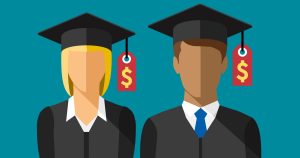If you are in need of a consolidation loan, you must meet certain eligibility criteria and submit your application by Oct. 31, 2022. The PSLF program allows you to consolidate up to 10 years of federal student loans into one single, manageable loan. To qualify for a consolidation loan, you must have a PSLF/TEPSLF certification, or complete the application online through the Direct Loans website. You must choose Exit Counseling as your loan type.

To qualify, you must have at least one job that is in the public good. For example, firefighters, teachers, health care workers, government workers, and social workers all fall into the public service category. These types of jobs are typically in demand, and you have a good chance of being eligible for student loan forgiveness if you meet the qualifications. Other professions are out of the running. Therefore, if you’re looking for a new job, it’s important to know the qualifications and eligibility requirements before applying.
A single-time loan cancellation is not enough to eliminate the problem of student debt. According to a study by the Brookings Institution, a one-time cancellation of student loans will only benefit those who can afford it. However, one-time loan cancellation does not solve the overall problem. According to the Committee for a Responsible Federal Budget, if a student loan cancellation were to be implemented, the overall debt would return to its current level by 2035.
If you are eligible for an income-driven repayment plan, you can set up auto-pay so that payments are automatically deducted from your bank account. While this may seem like a hassle at first, it can make a big difference in the amount of money you’ll need to repay. Furthermore, you can make additional payments that are higher than the minimum amount if you’re able to afford them. By following these tips, you’ll be on your way to a debt-free future.
The government provides several types of student loan repayment plans. The standard repayment plans are set by the lender and government and last ten years. You can also choose a graduated repayment plan, which starts with a lower monthly payment and gradually increases every two years. These repayment plans are still designed to help you reach the 10-year goal. Once you’ve completed your education, you’ll be able to get a lower interest rate and a lower monthly payment plan.
As of September 1, borrowers will be able to resume making payments on their federal student loans. As of this writing, the Treasury’s offset program has suspended collection activities on federal student loans that are in default. Withholding your child’s tax credit or Social Security benefits will not impact your payments. If you’re looking for a debt consolidation loan, contact a student loan servicer today to set up an income-driven repayment plan. If you’re in need of a deferment, your loan servicer can also help you set up an income-driven repayment plan to set aside your payments.
Besides a deferment, you can opt for a forbearance. If you are employed, you may be eligible for a deferment. If you’re in school, you will have a six-month grace period. The federal government estimates that a family can afford to pay for college. Deferment will allow you to delay repayment, but interest will accumulate on the loan and become due. If you are not working, your loan servicer will typically negotiate with you to get it back in good standing.
Direct Subsidized Loans: If you have demonstrated need for a federal student loan, you may qualify for a direct subsidized loan. This type of loan will not require any financial need and will start accruing interest the moment you enter repayment. In addition, the student must be enrolled in school for at least six months before interest begins to accrue. However, you can still apply for additional unsubsidized loans for the remaining cost of attendance.
You can also opt for variable interest rate. These loans fluctuate in rates from month to month, with some of them having a rate cap of 25%. While variable interest loans are riskier, they can save you money if you time your repayment period correctly. Consider choosing an autopay option, which will allow your loan servicer to automatically debit your bank account. This will ensure that you never miss a payment and enjoy lower interest rates. If you do choose a variable rate loan, remember to compare it to the federal student loan.
Student loan borrowers reflect the characteristics of the population as a whole. The demographics of households making payments on student loans are highly educated. They are white and educated. They are also more likely to have a graduate degree. Even if you were offered a “free college” scholarship, you would still have to borrow money to cover living expenses while in school. Most students take out loans for their education, so income-driven repayment plans are necessary for future borrowers.